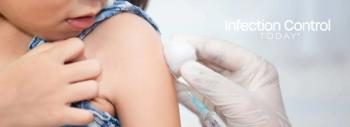
Spray-On Personal Protective Equipment in the Works
Peter Walter, PhD: “We think of AeroNabs as a molecular form of PPE that could serve as an important stopgap until vaccines provide a more permanent solution to COVID-19.”
There have been no human trials and, as yet, no commercial partners, but there’s certainly been a lot of interest in what amounts to personal protective equipment (PPE) that you can spray on and will, inventors assert, straitjacket SARS-CoV-2, protecting the subject from COVID-19.
As Aashish Manglik, one of the inventors of what he and his team of researchers at the University of California, San Francisco, put it in a school
Peter Walter, PhD, professor of biochemistry and biophysics at UCSF and one of the inventors, said in the press release that “far more effective than wearable forms of personal protective equipment, we think of AeroNabs as a molecular form of PPE that could serve as an important stopgap until vaccines provide a more permanent solution to COVID-19.”
The inventors say that they used protein engineering on nanobodies, which are antibody-like immune proteins that naturally occur in llamas, camels and other animals.
“Though they function much like the antibodies found in the human immune system, nanobodies offer a number of unique advantages for effective therapeutics against SARS-CoV-2,” Manglik said in the press release.
Nanobodies are much smaller than human antibodies, for instance, and that makes them easier to manipulate and modify. Their simple structure makes them more stable, as well. They’re relatively inexpensive and easy to produce: “scientists insert the genes that contain the molecular blueprints to build nanobodies into E. coli or yeast, and transform these microbes into high-output nanobody factories,” according to the press release. “The same method has been used safely for decades to mass-produce insulin.”
The infamous spikes on the SARS-CoV-2 virus are proteins that enable it to invade and infect ACE2 receptorcells in the lungs. When those spikes become active, their receptor-binding domains (RBDs) become exposed and will then attach itself to the ACE2.
The inventors devised a triple nanobody that can smother the RBDs on SARS-CoV-2. This triple nanobody is 200,000 times more potent than a single nanobody alone.
“The most potent of these nanobodies, however, not only acts as a sheath over RBDs, but also like a molecular mousetrap, clamping down on spike in its closed, inactive state, which adds an additional layer of protection against the spike–ACE2 interactions that lead to infection,” according to the press release.
Walter said for those who won’t respond to a COVID-19 vaccine when it comes along, or who might not have access to the vaccine, AeroNabs would act as a permanent line of defense against the coronavirus.
Newsletter
Stay prepared and protected with Infection Control Today's newsletter, delivering essential updates, best practices, and expert insights for infection preventionists.






